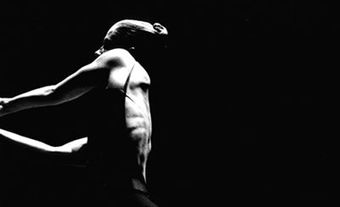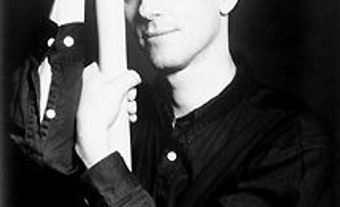Regina Seiden, painter (born 4 July 1897 in Rigaud, QC; died 11 January 1991 in Montréal, QC). Like other Montréal artists such as Prudence Heward, Regina Seiden specialized in portraits of women, including representations of immigrants to Canada. Seiden stopped painting soon after her marriage to German-Jewish painter Eric Goldberg (1890–1969) to dedicate herself to their relationship and Goldberg’s career. After Goldberg died, Seiden started to paint again but never regained the momentum of her early years. Despite her brief career, Regina Seiden is now recognized as an important Montréal artist of the early 20th century who was closely associated with the Beaver Hall Group.
Early Life
The Seiden family immigrated to Canada from Galicia (a small kingdom straddling modern day Poland and Ukraine in what was then part of the Austro-Hungarian Empire) around 1890 in order to escape anti-Semitic pogroms. The family settled in Rigaud, Québec in 1895, and Regina Seiden was born on 4 July 1897. Her father, Wolfe Seiden, who had owned a general store in Rigaud, died in 1899. Jente, Regina Seiden’s mother, continued to run the store with the help of one of her three sons. The Seidens, despite being the only Jewish family living in Rigaud at the time, observed religious traditions, keeping kosher and celebrating religious holidays. Regina Seiden, her mother, three bothers and older sister moved to Montréal in 1905.
Education
In Montréal, Seiden and her sister attended the Académie Marie-Rose, a private French school run by a Catholic order. Seiden was a student there from 1905 until 1912 or 1913. Showing artistic talent early on, she was encouraged to pursue a career as a painter by the nuns teaching at her school. From 1912 until around 1919, Seiden studied at the Art Association of Montreal under William Brymner and Maurice Cullen. Brymner, who was Director of the Art Association’s classes from 1886 to 1921, became an important influence for Seiden. He was well versed in French modernism, and encouraged students to find their own individual style based on close observation.
Despite the fact that there were few professional women artists in Canada at that time, Brymner encouraged his female students to pursue artistic careers. Seiden trained alongside several women artists who would later become members of the Beaver Hall Group, as well as artists who were associated with the Beaver Hall Group, such as Prudence Heward. Unlike these artists, Seiden did not form any lasting friendships, possibly due to her cultural background. Nonetheless, Seiden exhibited in both of the Beaver Hall Group’s annual exhibitions, the first taking place in January 1921 and the second in January 1922.
Exhibitions
Seiden’s work was recognized both by the Art Association of Montreal and the Canadian art press. She won several honourable mentions, and she was awarded a bursary in 1915, which covered two years of tuition. In 1917 she received a prize for drawing and painting en plein air (open-air), a practice made popular by Impressionists such as Claude Monet. Seiden won the Robert Reford Prize, which was awarded by the Art Association to the best student painting, in 1916, 1917, and 1918. The local press commented positively on her contributions to the two Beaver Hall Group exhibitions in 1921 and 1922. Seiden participated regularly in the Art Association’s annual Spring Exhibition from 1915 until 1930, and she often contributed to the annual exhibitions of the Royal Canadian Academy of the Arts from 1916 up to 1927. Significantly, her work was included in the 1924 and 1925 British Empire Exhibitions at Wembley, as well as the 1927 Exposition d’art canadien at the Musée du Jeu de Paume in Paris. Eric Brown, the Director of the National Gallery of Canada at the time, hoped that these exhibitions would draw international attention to Canadian art, especially the work of the Group of Seven. French critics in particular were unimpressed by the Group of Seven’s paintings. One critic asked whether there were any beautiful women in Canada, or if there were only landscapes.
Having trained in France, Brymner encouraged his students to spend time in Paris. Based on his advice, Seiden moved to Paris to continue her studies, enrolling in the women’s section at the Académie Julian in 1921. While there she shared a studio with some American students, and together they travelled to Florence and Venice where she painted Old Palace, Venice, among other works, which she exhibited at the Art Association of Montreal’s Spring Exhibition in 1923.
Seiden returned to Montréal at the end of the summer in 1922, and the next four years, before she returned to Europe, were the most productive years of her career. She rented a room, which she used as a studio, on McGill College Avenue. During this time she painted her best known works, including Old Immigrant Woman (1922) and Dora (1923). These works are indicative of the fact that Seiden preferred to paint portraits from live models. Art historian Barbara Meadowcroft has suggested that Old Immigrant Woman signified a link with Seiden’s cultural past. The artist had visited her mother’s family in Vienna while she was living in Paris, and she may have chosen the model because of a feeling of kinship with the woman. When Seiden exhibited the painting in 1922 she called the portrait Old Woman. In the Canadian Jewish Review, the female subject was described as an “old Jewish woman,” and it was therefore assumed the model was an immigrant, as Jewish families began to arrive in Montréal in greater numbers at the end of the 19th century.
Key Works
Seiden specialized in portraits of women, although she also painted landscapes and genre scenes. Unlike the Toronto-based Group of Seven, many Montréal artists of the early 20th century focused on the human subject. In 1919, the National Gallery of Canada purchased Seiden’s Portrait, which depicts Rae Kirsch — a young Jewish woman who was a friend of the Seiden family — in a pink evening gown with a black fan. The National Gallery, which at the time was starting to build up its collection of Canadian paintings, also bought Seiden’s Portrait (1919) from the Royal Canadian Academy exhibition; it was the only purchase the Gallery made from that exhibition. In 1924 the Gallery purchased Seiden’s portrait of a young poet, Dora (1923), which was also purchased from a Royal Canadian Academy exhibition. The Gallery purchased Nudes (1925), which depicts two women sitting together, in 1926. Nudes was purchased for $500.
The model for Dora was Theodora Gidlow, a young poet whose work appeared in American publications including Pearson’s Magazine. Gidlow published poems under the pseudonym Audrey Singleton. Seiden met Gidlow in the McGill College Avenue building where the artist had a studio. Gidlow’s older sister, the British-American poet and journalist Elsa Gidlow, rented a room in the same building.
In addition to Old Immigrant Woman (1922), Seiden painted Portrait of a South American Girl (1927), which depicts a quiet young woman with dark, pulled-back hair and wearing sober clothes. Her eyes are downcast and her hands are folded sedately in her lap. This representation of a Latin American woman contrasts with certain cultural stereotypes related to South American women, such as bright colours and swirling clothes. In 1925, Seiden had exhibited a work entitled Une Polonaise at the Royal Canadian Academy and in 1926 her work Two Sisters from Kiev was part of the Art Association of Montreal’s Spring Exhibition, suggesting that she had a particular interest in representing female immigrants.
Marriage
Seiden returned to Paris in 1926. Her year-long stay was financed by her brothers, as well as by sales of her work, including a series of “ancestral portraits” commissioned by the Taschereau family, one of the oldest and most distinguished families in Québec. For these portraits she used photographs and, as requested by the family, did not sign the paintings.
During this second stay in Europe she met the German painter Eric Goldberg who was born in Berlin in 1890. He was the son of a German portrait painter and had attained an international reputation as a successful artist and teacher. Seiden and Goldberg quickly became romantically involved, and Seiden continued to work in her own studio and saw Goldberg every evening. However, Seiden felt compelled to get married because she believed her family expected it.
The couple returned to Montréal in 1927, and they married in June 1928. The two artists spent the next seven months in Palestine, where they both painted. They eventually left because of mounting violence, and they returned to Paris, renting a large studio with the idea that Seiden would paint at one end and Goldberg at the other. However, within a few months she had stopped painting. In 1930 Seiden took part in her last exhibition for many years. Barbara Meadowcroft has speculated that her decision to give up painting may have been due to being brought up in a traditional Jewish family and educated at a Catholic school. Most of the women artists working in Montréal in the early 20th century remained unmarried, except Lilias Torrance Newton, who married and then divorced.
Seiden and Goldberg led a rich cultural life in Paris, meeting painter Marc Chagall and the psychiatrist Otto Rank, among others. They also spent time in an artists’ colony at Tossa de Mar in Spain. In 1935, they returned to Montréal, recognizing that Europe was once again on the brink of war. They had planned to return, so they left in Paris all of the work that Seiden had done before and just after her marriage.
Later Years
Seiden and Goldberg returned to Montréal at a time when artists were struggling to make a living, so they organized an art class at the Shaar Hashomayim synagogue in Westmount, a wealthier part of Montréal. From 1949 until 1969, Seiden helped Goldberg with the teaching and handled all of the administrative work. Although she was not actively painting at this time, both Seiden and Goldberg were members of the Contemporary Arts Society (1940–48), which was founded by artist John Lyman as a collective for Montréal’s more progressive modernist painters.
Goldberg died on 17 February 1969, at which point Seiden suffered a complete breakdown and had to be hospitalized. After her recovery, Seiden reopened the art class at the Shaar Hashomayim synagogue. In April 1976 there was an exhibition of her work in the library of the synagogue, but the paintings were mainly small oils, dating from the 1920s. Seiden gave up teaching in 1976, and moved to Florida. She died in Montréal on 11 January 1991, aged 93.
Legacy
As Barbara Meadowcroft has observed, because of her decision to abandon her painting career, Seiden was largely forgotten by art historians after 1930, despite her 1976 retrospective at the Shaar Hashomayim synagogue. However, feminist art historians began to write about, and exhibit the work of, women artists in the 1970s. This “rediscovery” of women artists is known as the recuperation project of feminist art history. Meadowcroft contributed to this project when she wrote an article about Seiden’s work in 1998. Meadowcroft’s article drew heavily on Seiden’s unpublished memoir, written in the 1980s, which is held in the Goldberg/Seiden collection, Alex Dworkin Canadian Jewish Archives in Montréal. Seiden is now written about alongside other important Montréal artists, and she is included in major exhibitions such as 1920s Modernism in Montreal: The Beaver Hall Group at the Montreal Museum of Fine Arts (2015).

 Share on Facebook
Share on Facebook Share on X
Share on X Share by Email
Share by Email Share on Google Classroom
Share on Google Classroom


